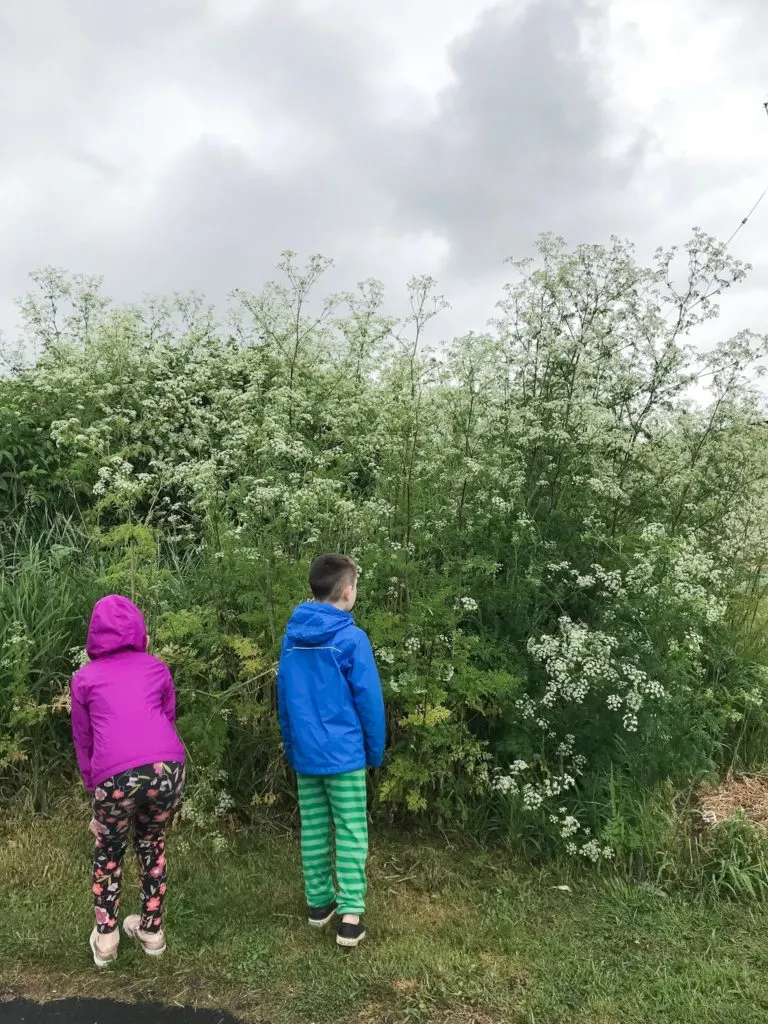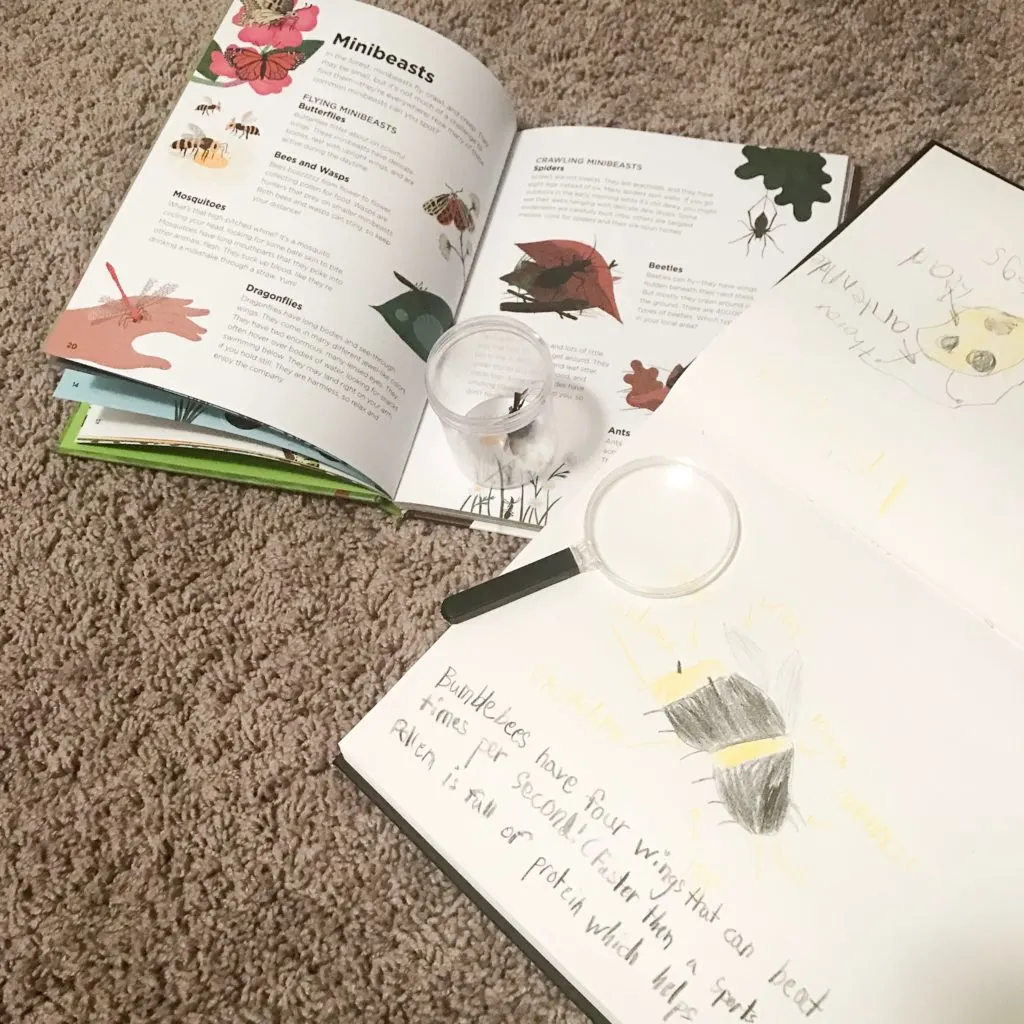Schooooools out for the summer!
But, now what?
The days of summer always go smoother in my home with some kind of routine. A chore chart. A system for earning screen time. A fun countdown to any trips we’re taking. A daily rest time. A plan to get outdoors.
As much as my kids and I love setting up the sprinkler in the backyard, I’ve learned that we all enjoy our time outside more when there is a little bit of direction. That’s why we’ve started to incorporate nature studies into our outdoor summer adventures.

Nature studies are much less “school” than you might think. In essence, they’re just a simple way to follow your child’s interests and help them take it a step further through various disciplines and mediums. For example, if you stumble upon a dead bumble bee, like we did recently, you can scoop it up and study it under a microscope or magnifying glass. Then, you can each sketch or watercolor your own bumble bee. Maybe your daughter will want to write a short story about your bumble bee’s life or perhaps your son will want to make up a song. You can follow up by putting some bee books on hold at the library to read together. Or, maybe you’ll go big and research plants that bees like most and plant them in your yard together to help attract more happy pollinators. See? So many options from one little outdoor encounter!

We’ve done similar nature studies with clouds, bark, snails, and a variety of plant identification. See what your littles are drawn to and go from there!
Below you’ll find a few tips for getting outside and learning with your kids while exploring the world around your home. Enjoy your nature studies!
Just Go
Today, throw on your shoes and tell your kids to grab their adventure hats. Open the door and head outside. Ten minutes is plenty. Thirty is fantastic. Just go outside and let the world speak to you.
Ask Questions
Ask what they see, hear, feel, smell, and taste. You’ll probably get a hundred answers! Hone in on one thing to dig deeper in as a family.
Look Close
Once you choose your topic ask your kids to really look close, to gather details, to log in their minds exactly what they see.
Ask More Questions
With our bumble bee study my kids immediately wanted to know how bumble bees die. They wanted to know why it was so fluffy while other bees are not. They were curious what kind of flowers they liked best. This was all fuel for out next step.
Go Home and Remember
My big kids are 6 and 8 and our first step is to always go home and recall what we saw. We’ll draw our specimen with as much detail as we can remember and usually write a word or sentence that accompanies it. For my 3 year old, I’ll Google search a coloring page so he can join in.

Choose a Supplemental Activity
Go to the library, search Pinterest for a craft, write a poem, or create a model. Let your personal skills and interests guide you! Maybe you want to bake and decorate bumble bee cookies. Maybe a nature documentary and discussion is more up your alley. You choose the best fit.
Share
We all remember what we have learned best when we share. Have your kids call their grandparents or write their pen pal or email dad at his work. My kids LOVE recording videos and sometimes I’ll share them on Facebook for our extended friends and family to comment or ask questions.
